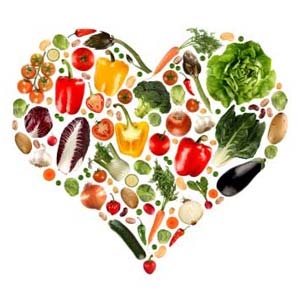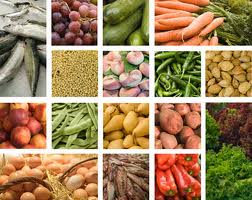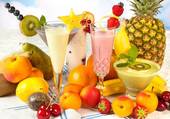FIVE A DAY IN MAY
Five a day in May, not just a brilliant line of poetry, but more of a challenge!

I challenge you to set a goal for this month to eat 5 servings of fruit and vegetables every day in May! It is not that difficult to do when you use some creativity and slowly start adding them to every meal. We must allow time to habituate to new habits and then it is easy enough to turn them into a life style. Five a day offers a rainbow of colour, colour represents nutrients in food, and when these nutrients are generated from well hydrated sources, such as fruits and vegetables, they are also not caloric dense. In other words, more bang for your buck.
Nutrition of fruits and veggies:
Here’s a guide to help you get 5 a day.
I dare you to try something new:
Vitamin A
• Orange vegetables: carrots, sweet potatoes, pumpkin
• Dark-green leafy vegetables: spinach, collards, turnip greens
• Orange fruits: mango, cantaloupe, apricots
Vitamin C
• Citrus fruits and juices, kiwi fruit, strawberries, cantaloupe
• Broccoli, peppers, tomatoes, cabbage, potatoes
• Leafy greens: romaine lettuce, turnip greens, spinach
Folate
• Cooked dry beans and peas, peanuts
• Oranges, orange juice
• Dark-green leafy vegetables: spinach and mustard greens, romaine lettuce
• Green peas
Potassium
• Baked white or sweet potato, cooked greens, winter squash
• Bananas, plantains, dried fruits: apricots and prunes,
• Cooked dry beans and lentils
MAKING A HEALTHY HABIT!
Research determines that it takes only 3 weeks to learn a new life time habit.
Repetition, such as doing it every day, is the key to engrain the new healthy habit into your daily routine. Here’s how…
♥ Give yourself a goal that sounds positive rather than negative.
♥ Visualize yourself successful and happy. See yourself doing things you have long desired to do, but couldn’t because of your old, bad habit.
♥ Reward yourself every time you successfully follow through with your new habit. Your brain will respond to the positive “strokes” and want more, making it easier to follow through.
♥ Make plans for tough times. By looking ahead and being aware of possible obstacles, you can plan ways to overcome them and stick with your new habit.
Remember, increasing your fruits and veggies have been shown to provide numerous health benefits and play a role in protecting against cancer!
EXERCISE CORNER
I often get asked this question:
Which will I get the most benefit out of : Aerobic or Anaerobic exercise?
So here is a brief synopsis of the difference.
♥ Aerobic exercise is any activity that uses large muscle groups, can be maintained continuously, and is rhythmic in nature.
Aerobic activities: running, dancing, bicycling, jogging and brisk walking, improves function and capacity of heart and lungs, and cause weight loss. Aerobic activity generally has a low to moderate intensity and can thus be sustained for a longer duration. It thus burns over the duration of the exercise time and is imperative for conditioning a healthy heart.
♥ Anaerobic activity targets large or small muscle groups, involves short bursts of strenuous exertion, followed by periods of rest. In other words, anaerobic activity is highly intense and is limited to short-lasting.
Anaerobic exercises: track sprints, weight lifting, power lifting and other resistance training, increases lean body mass, improves balance, muscular strength and muscular endurance. Anaerobic goes beyond fat burn, into what we call sugar burn, however from both the excess of of oxygen consumed as the respiratory system is recovering, fat burn results beyond duration. Furthermore, the more muscle tissue broken down and rebuilt, creates more metabolic active tissue in the body, which too increases fat consumption.
Both exercise types can improve blood cholesterol levels, blood pressure and glucose tolerance.
Bottom line:
incorporate both into your exercise routines for an overall mind, body, balance and endurance makeover.
Continuing the theme of FIVE-IN-MAY – why not challenge yourself to incorporating a variety of 5 different aerobic and anaerobic exercises each week in May.
FRUITS AND VEGETABLES
ALWAYS IN SEASON FOR HEALTH
Summer is around the corner, and that means a great opportunity to lots of variety in fruits and veggies will begin to appear in the grocery stores.
Fresh fruits and vegetables are most nutritious and best tasting when they are picked at their peak. It is thus important to recognize the signs of good quality and freshness.
Before buying any product, make sure it is of high quality. Take time to observe the environment where produce items are located. Is the area organized and clean? Some fruits and vegetables need to be kept at a certain temperature to maintain peak freshness.
Bruised or wilted foods suggest they were not handled properly and/or they are past their prime. Damaged areas or bruises can increase spoilage and such produce tend to lose nutrients.
Picking your own selection of fruits or vegetables tends to increase quality when compared to buying prepackaged fruits or vegetables that have already been bagged for convenience.
Often, using frozen fruits or vegetables is another option. Frozen fruits and vegetables are a convenient way to store produce items for extended periods of times. It might also be more practical to buy frozen fruits that may not always be available fresh.
Canned fruits can also offer convenience. They already been cooked, sealed and processed and thus any nutrients can be retained due to peak quality picking and efficient canning.
When it comes to fresh, frozen or canned produce, use what best fits your lifestyle. The main goal is incorporate a variety of fruits and vegetables
SOME GREAT TIPS ON PREPARING SATISFYING AND HEALTHFUL MEALS
When selecting fresh peaches, look for firm but well-colored fruit. They should be in their prime in July. Avoid green peaches, since they will not ripen once plucked. Although they will soften, they lack a good flavor.
Buy avocados slightly underripe. They should be almost firm when pressure is applied. Avocados ripen quickly at room temperature, and placing them in a brown paper bag hastens the process.
A sure test for checking corn on the cob for freshness is to puncture a kernel with a sharp object. Ripe corn will spurt “milk” if pressed; underripe corn will contain a watery liquid, and overripe corn will have tough kernels.
RECIPES FOR THE SEASON
Rhubarb-Vanilla Compote
4 servings, ½ cup each
Ingredients:
4 cups diced rhubarb,
½ cup sugar, ¼ tsp cinnamon,
½ tsp vanilla
Preparation:
1. Combine rhubarb, sugar and cinnamon in a medium saucepan. Bring to a simmer over medium-high heat; reduce heat to a gentle simmer and cook until the rhubarb begins to break down, about 5 minutes. Remove from heat and stir in vanilla.
Nutrition:
Per serving: 124 calories; 0 g fat ( 0 g sat , 0 g mono ); 0 mg cholesterol; 31 g carbohydrates; 1 g protein; 2 g fiber; 5 mg sodium; 353 mg potassium.
Nutrition Bonus: Vitamin C (15% daily value).
Kiwi Sorbet
(10 one cup servings)
1 cup water
¾ cup raw sugar
1 vanilla bean
10 kiwifruit, peeled and halved
1 tsp fresh lemon juice
2 tablespoons of rum or vodka (optional) – alcohol helps keep sorbet soft and scoopable.
In med. saucepan, combine water and sugar, bringing to boil until sugar is dissolved. Lower heat and simmer for 2 – 4 mins (or slight reduction). Turn off heat. Add vanilla bean. Cover and let cool to room temperature. (remove vanilla bean, set aside as syrup)
Blend kiwi until smooth. Whisk blended kiwi and syrup, rum and lemon juice. Pour into ice cream maker and freeze according to the equipments instructions. Once frozen, transfer into airtight container. Can be stored in freezer and is good for up to 2 weeks.
If alcohol is not used, remove sorbet from freezer at least 10 mins prior to serving, since it freezes harder without the alcohol.
HAVE A HEALTHY MAY – see you fitter, stronger, faster and healthier in June !!




